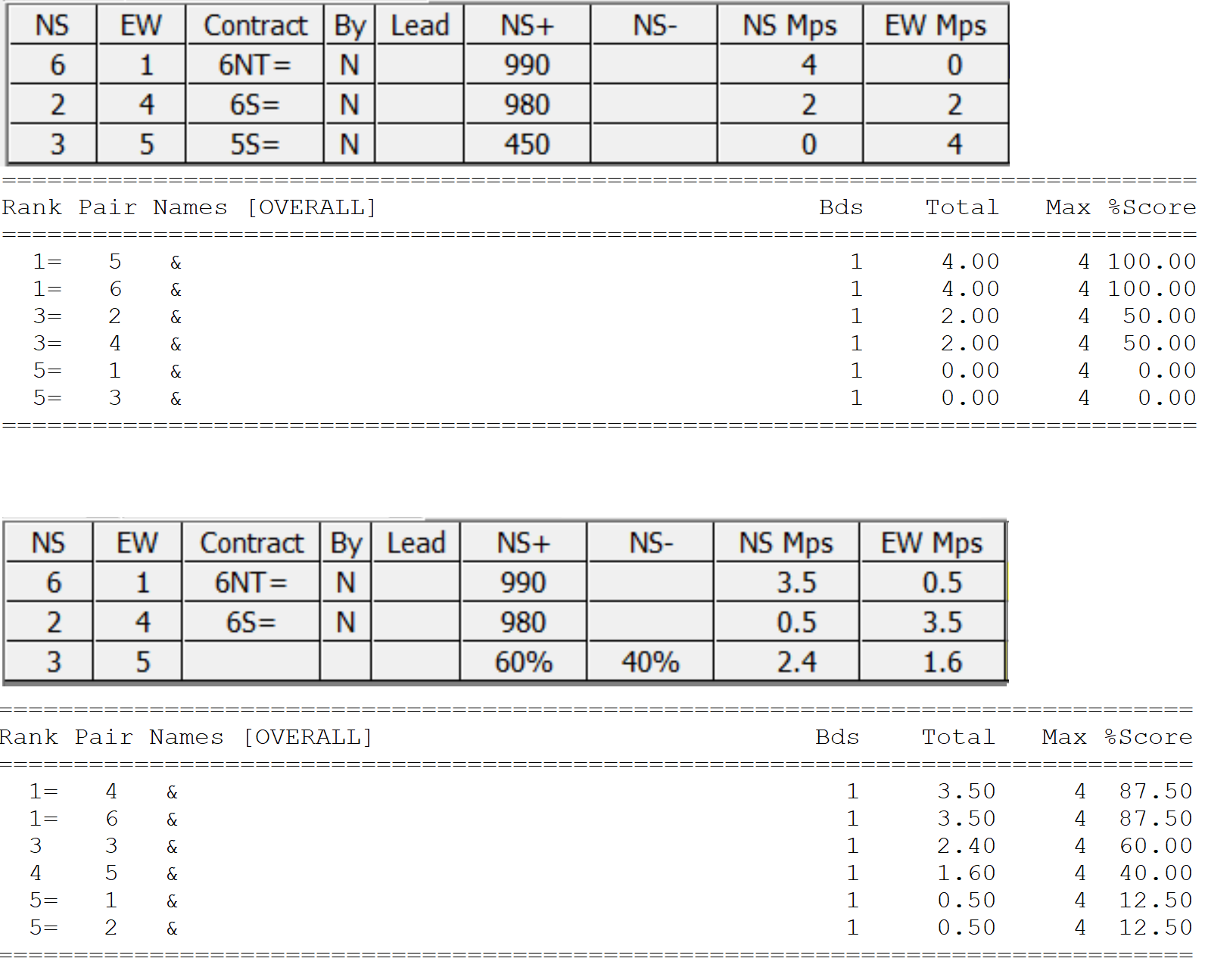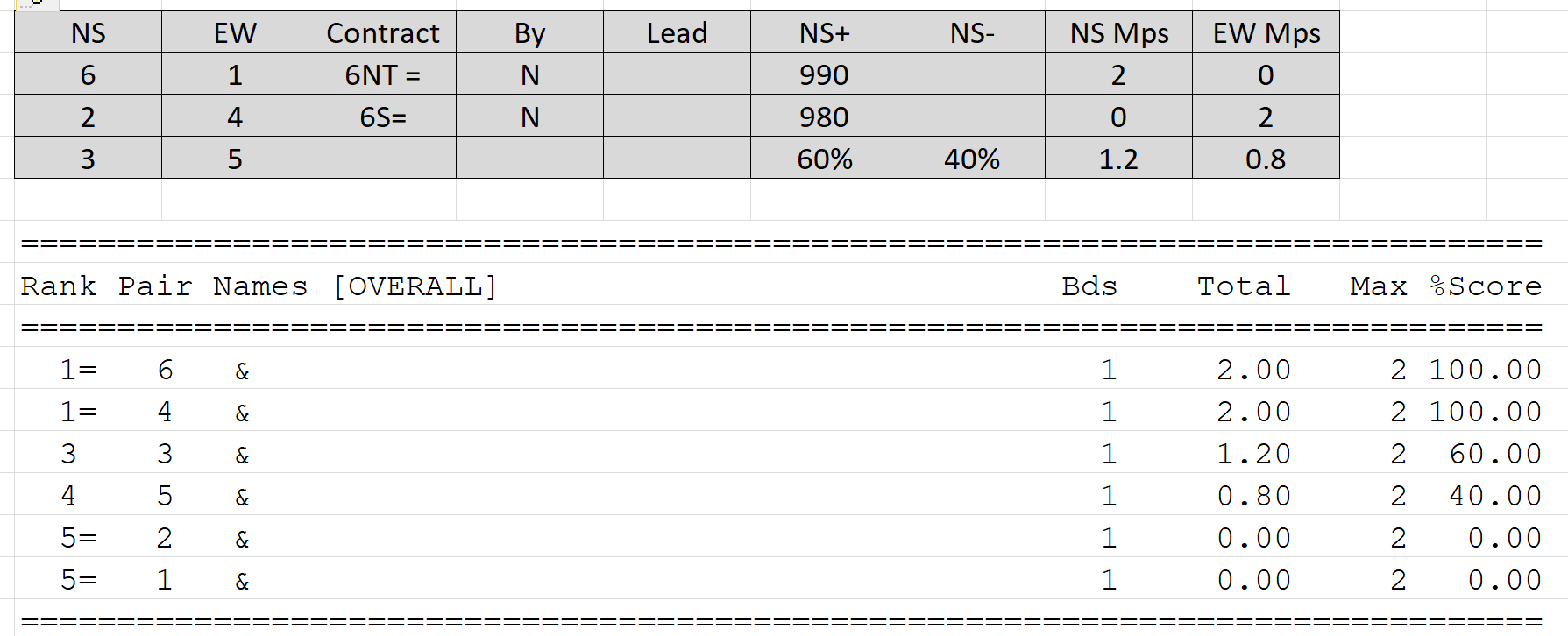On scoring AV+ / AV-
When a pair is awarded 60%, they get given 60% of the available matchpoints on that board (Law 12C2a).
The laws do not strictly define "available matchpoints", but from law 78A:
In matchpoint scoring each contestant is awarded, for scores made by different contestants who have played the same board and whose scores are compared with his, two scoring units (matchpoints or half matchpoints) for each score inferior to his, one scoring unit for each score equal to his, and zero scoring units for each score superior to his.
it's reasonable to deduce that available matchpoints are 2 x number of times the board has been played.
But where the board has not been played, and an AV+/AV- awarded, this implies that the available matchpoints should be 2 fewer.
Let's look at a board played 3 times with 3 results, then the same board with 2 results and an AV+/AV-.
You can see that EBUScore is still assuming that the available matchpoints are 4, when I contend they are not. The board has only been played twice, so the maximum possible MPs is 2.
I think the laws as written should produce this result:
I think this is a fairer result, better representing the achievements on the board.

Comments
Fascinating...but
I realise this isn't going anywhere, but I don't agree with the principle that all boards should be equally significant.
Let's look at Max's argument to this effect.
He says: Pair ‘Y’ have beaten pair ‘X’. Is this fair? Is this what you thought or expected would happen? Their results are identical save that pair ‘Y’ have a 65% score on one board and pair ‘X’ have a 100% on one board. Yet pair ‘Y’ are the winners?
He is effectively arguing that a result scoring 100% on a board played by 10 pairs is fundamentally better than the same result scoring 65% on the same board played by 50 pairs. I don't see this as obvious at all. It might be better, it might be worse - there's no "obvious" about it.
One has only to look at sim pairs: How many tops in a club actually equate to a top overall (where the board is played by many more players)? Very few.
It would, I think, be interesting to do an analysis on sim pairs. The information I need to do this doesn't seem to be readily available so I will go hunting!
I think you have to remember that the pairs who did play the board were also denied through no fault of the own the opportunity to get 2 matchpoints from the third time that the board was played. Neuberg tries to correct this so that for each board the total matchpoints at stake is roughly the same. Pair six got a top on the first score so it is likely (but not certain) that they would get a top after the AAS. Hence they get 3.5. Similarly pair 2 got a bottom so it is likely (but not certain) that they would get a bottom after the AAS - so they get 0.5.
No it isn't as good as having a top over ten tables, but nor is it a top over ten tables.
I appreciate the desire to compensate them for missing out, but what about the 2nd place people? What if they would win if the first pair gets their good score beaten, but otherwise stay second. Where is their compensation for the missed opportunity?